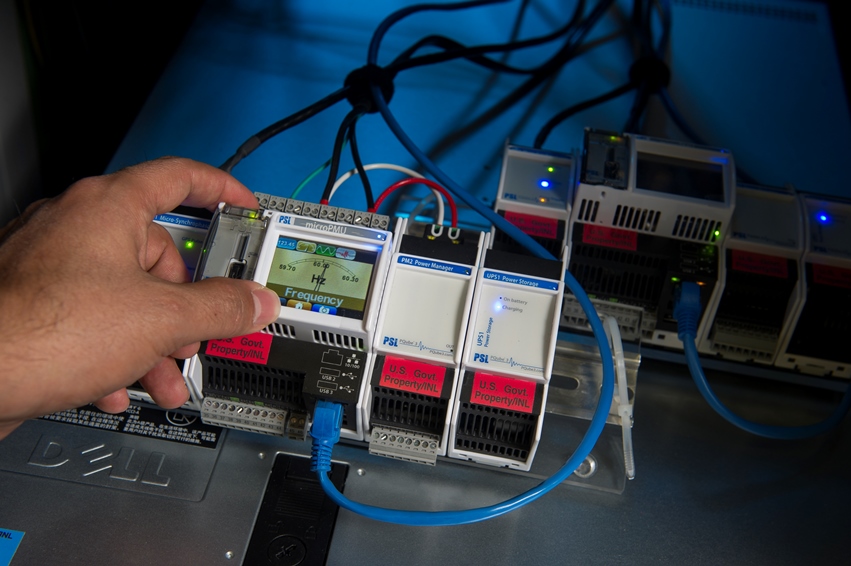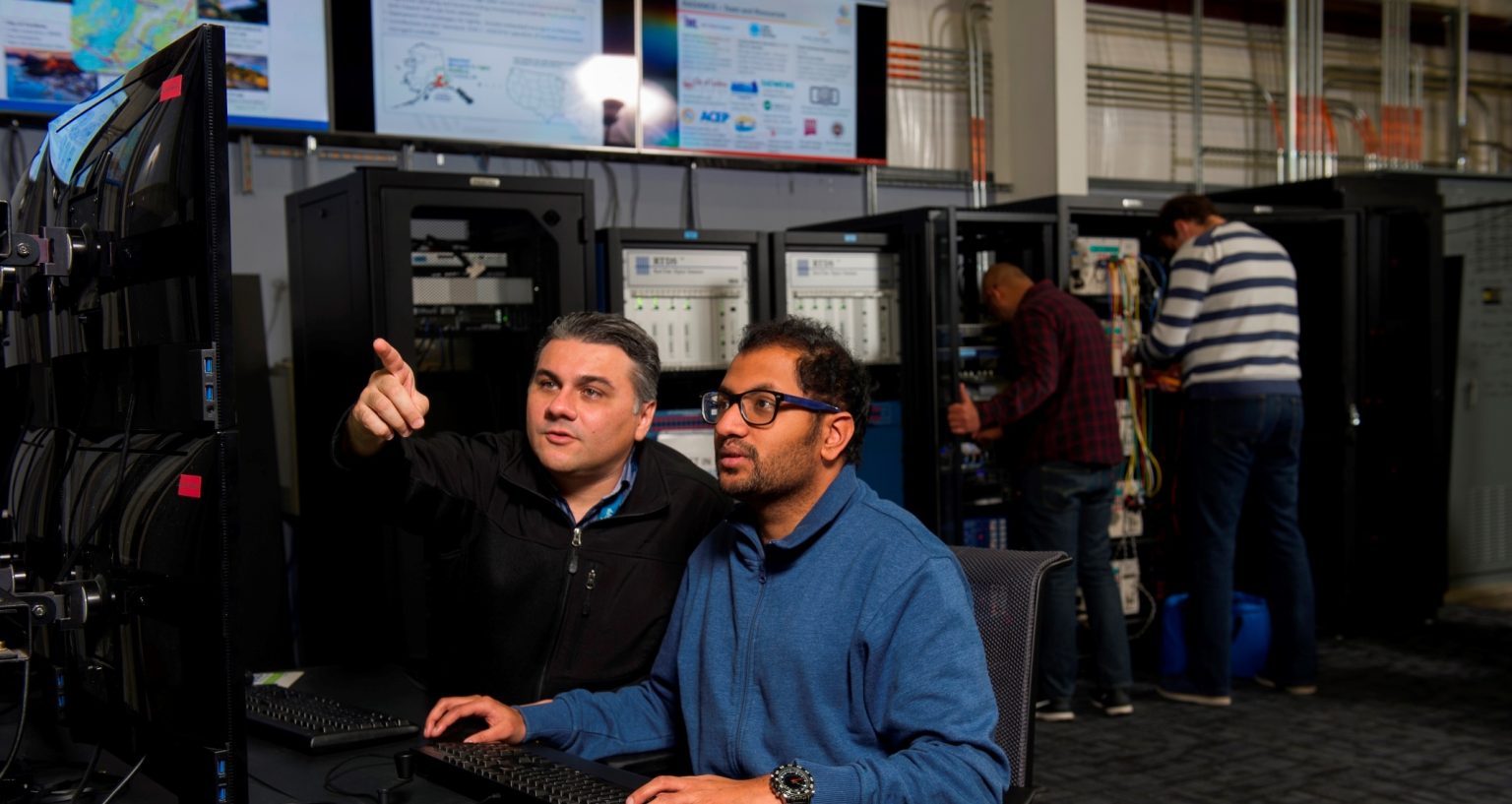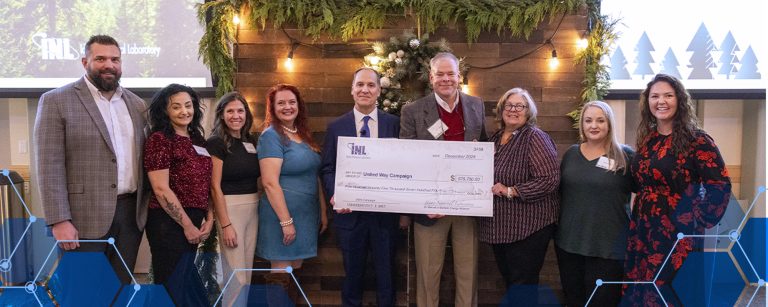In the aftermath of natural disasters, damage to an electrical grid can slow the recovery effort and prolong human suffering.
Last fall, Idaho National Laboratory researchers assembled a coalition of partners to design a system of microgrids that would enhance grid resilience by maintaining and restoring power after a catastrophic event or a cyberattack.
During the coming months, the partners will demonstrate this technology in the small fishing village of Cordova, Alaska.
When the microgrid system is finished, Cordova’s electrical grid will automatically reroute power to ensure that critical public services — hospitals, emergency shelters and other vital services — have electricity if part of the grid is damaged or disabled.
The Cordova system will include switches that can isolate one part of a microgrid in case of an emergency. This “islanding” allows undamaged and critical parts of the grid to remain functional.
In a sense, the system is smart enough to reconfigure itself. The project — Resilient Alaskan Distribution System Improvements using Automation, Network Analysis, Control and Energy Storage (RADIANCE) — could help get the lights back on in minutes instead of months.
Idaho National Laboratory research scientist Rob Hovsapian said Cordova, because of its challenges, is an ideal location to build and test a next-generation system of microgrids.
Cordova is in a far-flung nook of Prince William Sound. There are no roads connecting Cordova with the rest of the world. The only way to get there is by plane or boat.
The city’s electrical grid is also isolated; there’s no physical connection to the outside world. The situation is compounded by harsh weather and a mix of hydroelectric, diesel and solar power generation, with a seasonal consumer demand that changes significantly throughout the year.
In the event of a major natural disaster, such as the Great Alaska Earthquake of 1964, Cordova might be completely cut off. The city would need a power system that is smart and flexible enough to continue providing electricity for essential public services such as fire stations, hospitals and police departments.
In September, the U.S. Department of Energy (DOE) Grid Modernization Initiative announced funding of up to $6.2 million for RADIANCE to the Grid Modernization Laboratory Consortium (GMLC). As part of the GMLC, INL researchers will lead a team that includes scientists and engineers from Sandia National Laboratories and Pacific Northwest National Laboratory.
Partners include the Alaska Center for Energy and Power at the University of Alaska Fairbanks, the City of Cordova, the Alaska Village Electric Cooperative (AVEC) and the Cordova Electrical Cooperative. The GMLC is part of the Grid Modernization Initiative, a comprehensive DOE-wide focus to help shape the future of the nation’s grid.
Hovsapian’s power and energy systems group at INL recently assisted with the installation of a microgrid for Native American trust lands at Blue Lake Rancheria in Northern California. The microgrid provides power for an American Red Cross Emergency Shelter, among other services.
The Cordova project builds on lessons learned at Blue Lake Rancheria, Hovsapian said. “We expanded our research from a microgrid to smart reconfiguration of a microgrid,” he said.
When combined with next-generation grid sensors, hydroelectric storage, battery storage and wind energy, Cordova’s system of microgrids should remain partly functional even under extreme circumstances such as natural disasters or cyberattacks.

The eyes and the ears of Cordova’s microgrid system will be state-of-the-art micro-phasor measurement units (PMUs), equipment that monitors changes in the grid in real time.
The micro-PMU takes measurements of power quality, harmonics and instability at a very fast rate.
Based on highly detailed information from the micro-PMU, devices called microgrid controllers can make automated decisions about where to send the power by simultaneously coordinating loads, generation and storage.
“The controllers work in coordination with the existing system to reduce fossil fuel consumption, improve power quality and enhance resiliency,” said Mayank Panwar, INL’s principal researcher on RADIANCE.
Before the equipment ever reaches Cordova, the group will simulate the microgrid system in a 26,000-square-foot high bay at INL’s Energy Systems Laboratory.
There, real-time digital simulators allow the researchers to model how a power grid will perform before assembling the equipment in the field. The team can incorporate actual hardware into the simulation to learn how it will perform.
For instance, Cordova recently experienced a mudslide that took out one of its underground power lines.
“Let’s repeat that scenario and see how we recover from that,” Hovsapian said. “We take some of the risk away by developing these systems here, and we’re growing the science of microgrids in the process.”
By simulating those kinds of disruptions in the lab, researchers can help make Cordova’s grid more resilient in real life.
Another part of the project will establish data connections between Cordova and the 58 dispersed village communities under the AVEC. Electrical grids in the villages would then operate as a system of loosely networked microgrids in coordination with larger utilities in cities such as Anchorage and Fairbanks.
If one village experiences a damaged electrical grid, engineers can call upon the expertise and capabilities of other utilities in the network.
“How can you make those microgrids more resilient?” Hovsapian said. “You can leverage each other’s resources.”
The Power and Energy Systems group at INL hopes the technologies developed and the lessons learned at Cordova and Blue Lake Rancheria can help make grids more resilient across the United States.







